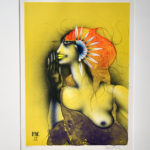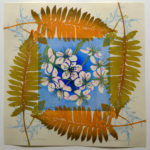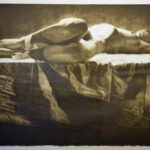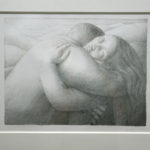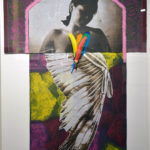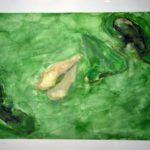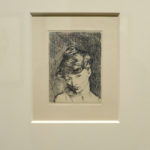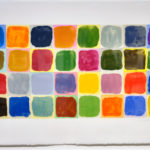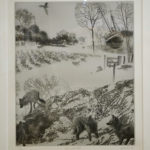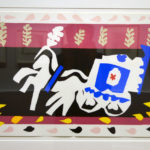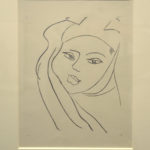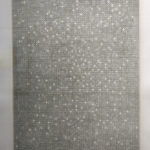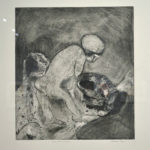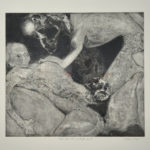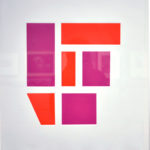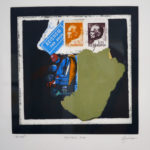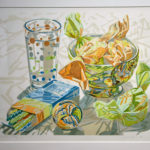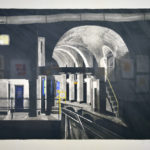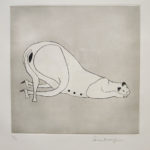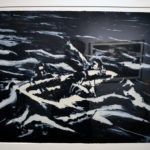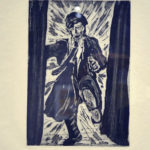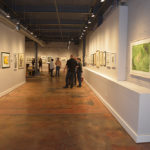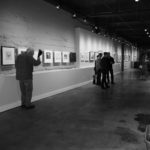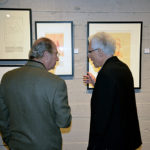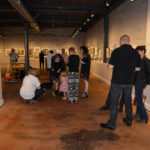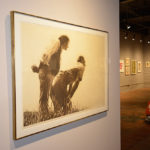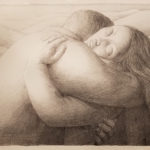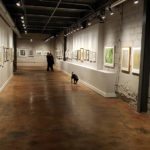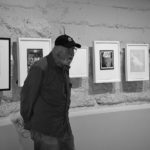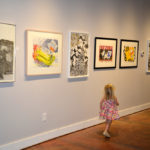In Cooperation with the Hunter College Printmaking Faculty
& The John Szoke Gallery (NYC)
37 Artists / 73 Limited Edition Prints / Details & Bios
May 5th through June 29th, 2017
425 Campbell Avenue SW / Roanoke, Virginia
Parking?
Images from the Exhibit Opening on May 5th, 2017
Curators: Anthony Panzera & Sabina Klein
Hunter College Collection: Sylvie Germain Covey / Aleksandar Duravcevic / George Hofmann / Mohamad Khalil / Laura Sue King / Vincent Longo / Antek Milkowski / Andrew Mockler / Anthony Panzera / Jiyoung Park / Bruce Porter / Juan Sanchez / April Vollmer / Sanford Wurmfeld
John Szoke Gallery Collection: Horst Antes / William Bailey / David Becker / Louise Bourgeois / Richard Bosman / Donna Dennis / Janet Fish / Jane Freilicher / Yvonne Jacquette / Horst Janssen / Sabina Klein / Henri Matisse / Peter Milton / Elizabeth Murray / Pablo Picasso / Odilon Redon / Susan Rothenberg / Jeanette Pasin Sloan / Donald Sultan / George Tooker / Jan Peter Tripp / Paul Wunderlich
Traditional and Innovative Techniques
The idea for The Print Show came from one of the founders of the Alexander/Heath Gallery, Robert Huot, a former professor at Hunter College of the City University of New York. He reached out to me, a former colleague, and to Sabina Kline, a former student, to curate the exhibition. With Huot’s insight, the connecting thread between the Hunter College Art Department and printmaking is at the core of this exhibition. The Printmaking Department flourished under the tutelage of Professor Vincent Longo, the head and founder of the print department during the golden years of the Hunter College Art Department. He and his colleagues at the time formed the nucleus of a vibrant and brilliant faculty. Longo’s print shop was part of a pervasive, creative atmosphere at Hunter which reflected the exciting art scene then exploding in New York and throughout the world.
What started out as a focus on Hunter College printmakers, past and present, and the masterful array of methods and styles they employ in their work, grew exponentially by virtue of a connection of another kind. After studying at Hunter with Professor Longo, Sabina went to Paris to study at the Printmaking Atelier 17 with William Hayter. She returned to New York, began a career as an artist/printmaker and printmaker for artists, and married print dealer, John Szoke of the John Szoke Gallery in New York City. Through that fortuitous link, John graciously joined in this endeavor and loaned some of his prize works to the exhibit. These master works, traditional and experimental, along with those of Hunter printmakers, provide a wide lens into the ever-expanding world of prints.
Printing has a long and complex history, spanning centuries and civilizations. The earliest form of printing were born in the third century BC in Egypt and Mesopotamia and functioned as seals and stamps used to print impressions on official and sacred documents. These were made of clay slabs, or carved stones, or incised metal cylinders. These carved objects, serving as signs or signatures, had the distinct advantage of being repeated in exact duplication. With the development of pictorial images printed as carved reliefs came the replication of patterns and designs on fabrics, and eventually, with the invention of paper, printing spread even further and faster. These processes were the precursors for the development of woodblock printing in China in the second century AD which spread from there to Korea, Japan and India. But it was during the sixteenth and seventeenth centuries that Japan built upon that tradition and developed a new form of woodblock printing, the Mokuhanga method, using multiple blocks for individual colors with a sophisticated registration system that arrived at a new level of precision and beauty.
Traditional woodblock printing also found its way to Europe early on. In the European medieval monasteries monks were trained as scribes and labored over handwritten copies and illuminated manuscripts of ancient texts, both religious and secular. At times, in addition to the illuminations made by hand, they added woodblock print illustrations to the texts. It was, however, the invention of the Guttenberg Press in the mid-fifteenth century and, before that, the invention of moveable type, that allowed the printing of texts and images to spread and flourish with a new found audience among the humanists. In addition, the printing press gave life to the development of new printing methods. The process of engraving on metals, such as gold and silver, for decorative purposes, evolved into engraving on copper plates which could then be inked and printed on paper. This led to other methods, such as etching lines with the use of acid and creating tones with aquatint. Eventually these innovations led to the invention of lithography in the seventeenth century, a process of drawing on limestone with oil-based materials and treating the stone with a solution of acid and gum arabic, utilizing the principle that oil and water were insoluble components. All of these printmaking methods had one essential common factor: the images could be duplicated repeatedly to reach greater audiences.
The scope of The Print Show includes a broad selection of American and European artists/printers, as well as a large variety of printmaking methods. It is a diverse mix of both traditional and innovative printmaking techniques and what follows is a list of those techniques with a brief explanation of each.
The Traditional Printmaking Techniques Include:
Relief: (Printing from a raised surface)
Woodblocks (use of carving tools)
Linoleum cuts (use of carving tools)
Wood Engraving (use of the burin carving tool)
Intaglio: (Printing from below the surface with no acid)
Drypoint (cutting lines in the surface of a metal plate with an etching needle)
Messsotint (creating tones using a metal rocker)
Engraving (creating lines using a burin)
Intaglio: (Printing from below the surface with acid)
Etching (exposing metal with a needle through an acid-resistant hardground)
Aquatint (creating tones with acid-resistant particles of rosin)
Soft ground (pressing textured materials into a soft acid-resistant ground )
Open or spit-bite (manually floating acid on a plate with brush and water)
Collography: (Printing from below and above the surface)
Using varied textured materials glued to a board which are then inked
Lithography: (Surface printing using the principle of water and oil)
Limestone (working directly on stone with oil-based materials)
Aluminum Plates (same as above)
Silkscreen or Serigraphy (Surface Printing through screen)
Stencil method using silk or artificial screen fabrics
Embossing
Making impressions without ink
The Innovative Printmaking Techniques Include:
Photo-Etching:
Exposing photographic half-tone images as transparencies on photo-sensitized plates
Photogravure:
Same as photo-etching using far more sophisticated acid baths
Photo Lithography:
Exposing photographic half-tone and other transparencies on photo-sensitized plates
Photo Silkscreen:
Exposing photographic half-tone transparencies on artificial screen fabrics
Digital Transfers
The transfer of print ink directly to print paper or canvas (the process of frottage)
Digital Prints
High Quality computer generated-prints (such as giclee)
Chine-Colle
The process of laying a thin sheet of light-weight paper on the inked plate, brushing glue onto the back of the thin paper and printing the plate on a heavier printing paper. The thin paper adheres to the heavier printing paper in the printing process.
Mixed Media Techniques
Mixing other methods with traditional printmaking techniques.
For a far more lucid and encompassing history and description of all printmaking methods, both traditional and innovative, we have included the titles of two newly released printmaking books, written by two of the artists featured in this exhibition:
Sylvie Germain Covey, Modern Printmaking : Berkley, Watson-Guptil Publishers, 2016.
April Vollmer, Japanese Woodblock Print Workshop: Berkley, Watson-Guptil Publishers, 2016.
Anthony Panzera, Professor Emeritus, Hunter College CUNY
Gallery Address:
Alexander/ Heath Contemporary, LLC
425 Campbell Ave SW
Roanoke, VA 24016
Contact: Ed Hettig / hettig@alexander-heath.com / 607.226.2473


